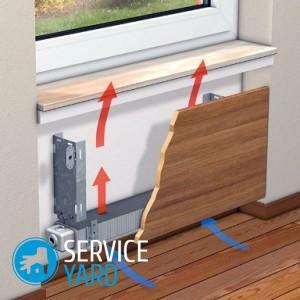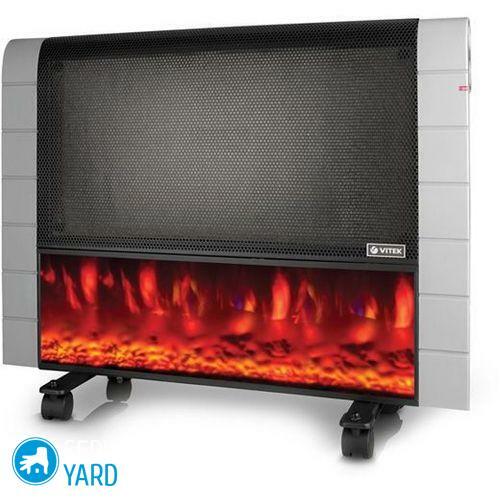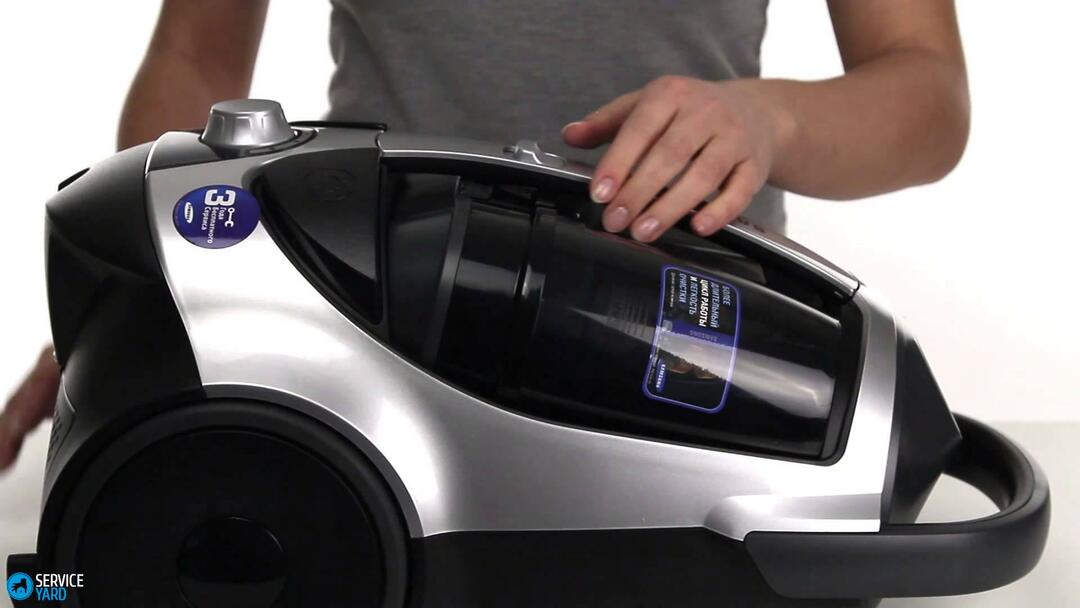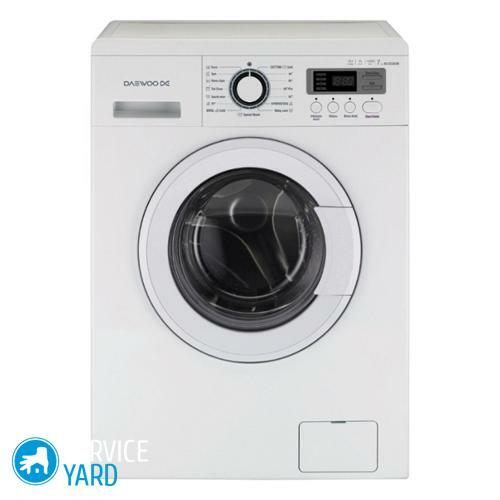
- Design and operating principle of the fan heater
- Design and operating principle of the convectors
- Conclusions: what is better - a convector or a fan heater?
- Features of
- oil heaters. Features of infrared heaters
Electric heaters for many are a worthy alternative to an autonomous heating system. Especially in cases where there is a need for periodic heating of air in various rooms, for example, in the country on weekends or in a city apartment in a cold period, when the heat of the batteries is not enough. When entering the store, many consumers are confused by the huge amount and variety of heaters, and the question arises: what is better - a convector or a fan heater, and as an alternative: what is better - a fan heater or an oil heater? From a technical point of view, all these heaters work in accordance with the same principle: they heat the air by means of convection air circulation, that is, when the rising warm air stream pushes the cold down to the heater.
In this article we will review the characteristics of devices, evaluate all the advantages, note and drawbacks, in order to understand when to prefer this or that device.
to the contents ↑The device and operating principle of the fan heater
The fan heater is a modern version of the reflector that was used before, 30-40 years ago, for heating the air in the country or apartment. A modern fan heater is very popular with consumers. It is a fairly cheap and effective device capable of warming up the air in a short space in a short time, thereby providing a comfortable microclimate for people.
The principle of operation of the device is clear from the name: the air heated by the electrical element is fed into the room thanks to the built-in fan.

Types
The fan heater is manufactured in various modifications:
- Floor.
- Wall mounted.
- Ceiling fitting.
- Device for thermal curtains( located above the door).
The fan of the device forcibly blows and heats the air through the heating element, which can be of various types:
- Electric spiral. Capable of heating up to 800 degrees.
- Ceramic tiles. Heating temperature up to 200 degrees.
- Tubular heater. The operating temperature is about 200 degrees.
Advantages of
The main advantages of the device are:
- Room warming speed - with the right choice of power, the room can warm up within a few minutes.
- Compactness.
- Mobility.
- Presence of a mode of maintenance of a necessary temperature.
- Cheapness.
- Elegant design.
- Cost-effective.
- Embedding in any interior.
- Additional functions available.
Important! Determining what is better - a convector or a fan heater, one must take into account the fact that in this category there are different installation options:
- Wall mounted devices are made in the style of an air conditioner.
- There are outdoor and even desktop devices.
Many models are able to rotate along the vertical axis and provide uniform heating of the entire room.
Disadvantages of
As with any technical device, the fan heater has drawbacks that limit its scope:
- Noisy work. This is especially true for large power plants.
- Unpleasant odor that occurs when dust and debris get on the heating element. This drawback is especially typical for models with an open spiral and for cheaper devices.
- Pollution of the environment, due to the combustion of oxygen, as well as dust particles on a glowing open spiral.
- Ability to overheat, especially when the device is in continuous operation.
- Reduces air humidity. Although this drawback applies to all heaters, because of the increase in temperature, air loses moisture.
Important! The cleanest air is created by devices with a ceramic heating element. The most polluting air is the fan heaters having an open spiral.
Useful tips:
- Although models with a ceramic heating element are more expensive, they are much better in operation.
- Note when selecting on the back panel of the device: if there is a sponge filter that performs a rough cleaning, then the air will be much cleaner.
- The optimum power of the device should be from 1 to 3 kW.In addition, for simplicity and ease of use, the power should be smoothly regulated.
- Acquire devices with a well thought-out security system that will provide protection against overheating, and also automatically turn off the device when it tumbles.
- Use a fan heater to dry the cottage after the winter or in small rooms with drafts. It is convenient to use the device if you need to warm up the room quickly and often.
Design and operating principle of convectors
Before deciding what is better - a convector or a fan heater, you need to understand that the convector is a little more complicated than the fan heater. The principle of its operation consists in warming up the air due to natural or forced circulation of the streams when passing through a preheated heat exchanger.
Important! Cold air enters through the grate located in the lower part of the device, into the convector, and through the heater it leaves through the upper grate of the device, evenly distributed over the room.
Types of
The type of energy used is:
- Electric. They are the simplest and most common. For operation, only the supply voltage is required.
- Gas. The devices are more economical than electric ones, but they are more expensive, besides, a connection to the gas main is necessary.
Depending on the location of the device, there are:
- Floor. For ease of movement, the instruments are equipped with wheels.
- Wall mounted. Place this type of convector a few centimeters from the floor, which provides a better warming of the room.
- Combined.
- Intrafield.

Important! The convector is often used to dry the bathroom and other rooms with high humidity. When choosing a device for this purpose, pay attention to the electrical protection class of the device( preferably the second one) and the moisture protection class( must be at least IP24).
Advantages of
Advantages of convectors are many, which often causes the decision in favor of this equipment if a dilemma arises that is better - a convector or a fan heater. They are as follows:
- Long operation time.
- Possibility to connect the device to a heating system.
- Security of use.
- Fast air heating.
- Noiseless operation.
- Presence of built-in thermostats, thanks to which it is possible to set the necessary temperature in the room.
- Small size.
- Original design.
- A variety of installation options. Floor - mobile, thanks to the wheels, and for wall mounting fasteners are provided.
- Good fire resistance.
- Anti-rollover protection.
- Durability. Designed to work for years.
Disadvantages of
The only and significant drawback of the device is the insufficiently rapid heating of air to the desired values - due to the modest possibilities of natural convection.
Therefore, it is very difficult for a convector heater to heat a high room. In addition, the device is afraid of power surges, and when working in drafts there may be interruptions.
If there are no provocative failures of the system in the proposed installation room, the conclusion as to what is better - a convector or a fan heater, is obvious. Devices of the first type in priority.
Useful advices:
- When choosing a device, pay attention to the products of well-known manufacturers.
- Choose a model with an electronic thermostat that can monitor temperature changes to within 1 degree.
- For domestic purposes, use convectors with a power of 0.25 to 2.5 kW, depending on the area of the room. Take an interest in the temperature of the body heating, for example, for work in the children's room, the body should be heated to 55 degrees.
Conclusion: what is better - a convector or a fan heater?
After acquainting yourself with the advantages and types of heating devices, you can answer the question: what is better - a convector or fan heater for your needs and purposes:
- If you need to quickly heat the room, but the device will work for a short time, then the choice is for the fan heater.
- If it is necessary for the device to work for a long time, reliably heated several rooms, it is more preferable to use a convector. It is more environmentally friendly and provides more even heating of the room. It is also possible to combine it into a heating system with a single control.
Important! It will be quite effective to use, if necessary, two devices: first the fan heater will quickly heat the air, and then the convector will maintain the set temperature for a long time.
to content ↑Features of
oil heaters The classic way to provide additional heating for a house or apartment is an oil cooler that has a simple design, including:
- heater, which serves as a heating element;
- sealed housing, filled with oil.

Important! Because of the intermediate coolant, radiator heaters are called oil coolers.
Principle of operation of the device:
- TEN converts electrical energy into heat, which is transferred to the oil, and then to the fins of the radiator and the surrounding air.
- The warm air flow moves upward, and the cooled down air descends and heats up again.
Important! Thanks to this long cycle, the oil heater heats the room more slowly, but it keeps the heat longer, plus - does not burn the air.
Advantages of oil heaters:
- Reliability.
- Quiet operation.
- Environmentally friendly.
- Presence of the regulator of intensive heating.
- Presence of a timer - provide an opportunity to choose a convenient mode of operation.
- Keeps the heat for a long time.
- Security.
- Small overall dimensions.
- Mobility.
Important! Oil radiators are capable of heating large areas, while the level of safety of devices is quite high. Therefore, it can be left unattended for several days. Manufacturers install safety thermostats on devices capable of preventing their overheating, as well as shutting down in the event of a fall.
Cons
The disadvantages of the device include:
- slow heating of air;
- is quite a high price, for example, in comparison with a fan heater;The
- radiator is quite heavy.
Important! The key point of the oil cooler is the number of sections: the more sections, the better the heat transfer. If the two models have different number of sections, but the same power, then the device with a smaller number of ribs will warm the room worse, but it will heat up faster.
Useful advices for
When selecting a device, pay attention to the following additional functions:
- If a fan is built into the radiator, the room will warm up more quickly, since the built-in fan will accelerate the air through the room.
- An air humidifier can be built into the model of the device, so you do not have to place a container with water near the heater to maintain the required humidity.
Conclusion: what is better - a fan heater or oil heater?
To answer the question: what is better - a fan heater or oil heater, it is necessary to take into account the area of the room, the period of use and the purpose of the premises, as well as the financial possibilities.
The oil cooler is suitable for use in areas where noise is undesirable and high safety is required. It can be a children's room or a bedroom. Also get an oil cooler if you need to maintain a high temperature, for example, near the desktop.
However:
- Do not use the radiator in the bathroom and in another damp room.
- It is not possible to use an oil cooler for drying clothes, because due to the inability of air to rise, it is possible to overheat the device.
- The radiator should always be in an upright position, as the heating element is at the bottom and is designed for a certain oil pressure and quantity.
- The oil device can not be used in small rooms( with an area of less than 4х2 m).
- Due to the high temperature on the surface, the oil cooler must not be placed near furniture and fusible materials( the recommended distance is not less than 50 cm).
Features of infrared heaters
Comparison of different heaters will not be complete if we do not consider the features of the device of infrared devices.
The main differences:
- All the heaters described above, transmit heat to the air about the principle of convection( forced or natural).
- An infrared device circulates electromagnetic waves around itself, thereby heating up only objects, not the entire area. And from the objects the heat spreads into the air in the room.
Pros:
- Purposeful heating of the area that needs it.
- The device can quickly warm up the room even with drafts.
- Since the device does not contain moving parts that can break, it will take a long time to serve such a device.
Important! All types of heaters lose infrared in terms of economy. Therefore, if you want to spend as little as possible on heating the room, then the choice is for a modern device. And for such parameters as efficiency and safety, the infrared heater outperforms its "colleagues" .
We hope that the information in this article will help you choose the type of heater and model, based on your goals, needs and capabilities. If you have decided what you expect from the device and what principle of action you need, then listen to our advice and recommendations to make the right choice. Good luck!



